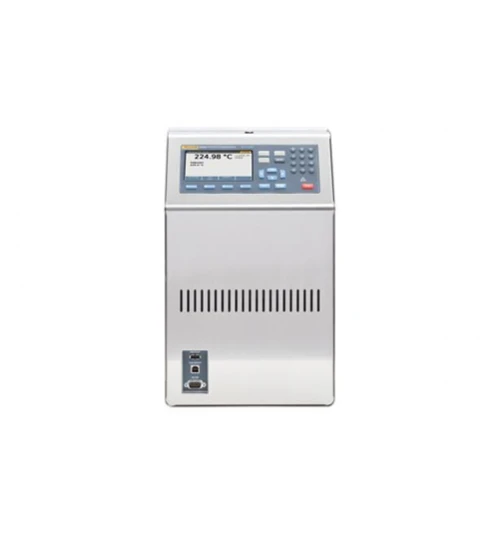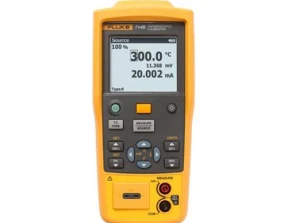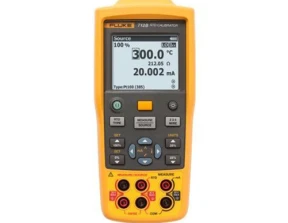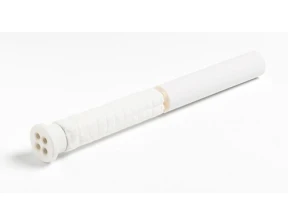Calibrator
Fluke Calibration 6109A / 7109A Portable Calibration Baths
Key features
• Calibrate up to four tri-clamp sanitary sensors per batch with ± 0.1 °C temperature display accuracy.
• Covers a wide temperature range: 6109A: 35 °C to 250 °C
• 7109A: -25 °C to 140 °C.
• Stainless steel casing that withstands harsh cleaning solutions; it's easy to transport and maintain.
• Calibrate up to four tri-clamp sanitary sensors per batch with ± 0.1 °C temperature display accuracy.
• Covers a wide temperature range: 6109A: 35 °C to 250 °C
• 7109A: -25 °C to 140 °C.
• Stainless steel casing that withstands harsh cleaning solutions; it's easy to transport and maintain.
Download
Produk Lainnya
Fluke 714B Thermocouple Calibrator
Key features
• Highly accurate, easy-to-use thermocouple temperature calibrator
• Measures and simulates 17 thermocouple types and millivolts
• Measures 4 to 20 mA signals while sourcing a temperature signal
• Comes with a magnetic hanger for convenient hands-free operation
• Features configurable source settings for quick linearity checks
• Highly accurate, easy-to-use thermocouple temperature calibrator
• Measures and simulates 17 thermocouple types and millivolts
• Measures 4 to 20 mA signals while sourcing a temperature signal
• Comes with a magnetic hanger for convenient hands-free operation
• Features configurable source settings for quick linearity checks
Fluke 712B RTD Calibrators
Key features
• Highly accurate, full-featured , easy-to-use single function RTD temperature calibrator
• Measures and simulates 13 different RTD types and resistance
• Measures 4 to 20 mA signals while simultaneously sourcing a temperature signal
• Comes with a magnetic hanging tool designed in for convenient hands-free operation
• Features configurable 0% and 100% source settings for quick 25% linearity checks
• Highly accurate, full-featured , easy-to-use single function RTD temperature calibrator
• Measures and simulates 13 different RTD types and resistance
• Measures 4 to 20 mA signals while simultaneously sourcing a temperature signal
• Comes with a magnetic hanging tool designed in for convenient hands-free operation
• Features configurable 0% and 100% source settings for quick 25% linearity checks
Fluke 4180, 4181 Precision Infrared Calibrators
Accuracy and traceability for infrared measurements
Now it’s easy to increase your IR temperature measurement accuracy with the new 4180, 4181 Precision Infrared Calibrators from Fluke Calibration. These infrared temperature calibrators give more consistent, accurate and reliable calibrations because emissivity is radiometrically calibrated, and the target size minimizes size of source effect errors. In addition, these infrared calibrators simplify calibration because they uniquely compensate for errors caused by thermometer emissivity settings.
New accredited performance for point-and-shoot calibrations
• Calibrated radiometrically for meaningful, consistent results.
• Accredited calibration included
• Accurate, reliable performance from –15 °C to 500 °C
• Large target size of 152 mm (6 in) is required for calibrating most thermometers.
• Light instrument weight of 8.6 kg (19 lbs) makes it easy to lift and carry.
• Intuitive, easy-to-read display that indicates when temperature is stable.
Now it’s easy to increase your IR temperature measurement accuracy with the new 4180, 4181 Precision Infrared Calibrators from Fluke Calibration. These infrared temperature calibrators give more consistent, accurate and reliable calibrations because emissivity is radiometrically calibrated, and the target size minimizes size of source effect errors. In addition, these infrared calibrators simplify calibration because they uniquely compensate for errors caused by thermometer emissivity settings.
New accredited performance for point-and-shoot calibrations
• Calibrated radiometrically for meaningful, consistent results.
• Accredited calibration included
• Accurate, reliable performance from –15 °C to 500 °C
• Large target size of 152 mm (6 in) is required for calibrating most thermometers.
• Light instrument weight of 8.6 kg (19 lbs) makes it easy to lift and carry.
• Intuitive, easy-to-read display that indicates when temperature is stable.
Fluke 9118A Thermocouple Calibration Furnace
High performance furnace for thermocouple calibrations to 1200 °C
The Fluke Calibration 9118A Thermocouple Calibration Furnace is a horizontal, open-ended tube furnace with a temperature range of 300 °C to 1200 °C. It is used for comparison calibration of noble and base-metal thermocouples by secondary high-temperature labs and instrument shops in industries such as aerospace, automotive, energy, metals, and plastics. The 9118A is the most accurate, reliable, and flexible furnace in its class, meeting the demanding requirements of high-temperature thermocouple calibration.
The Fluke Calibration 9118A Thermocouple Calibration Furnace is a horizontal, open-ended tube furnace with a temperature range of 300 °C to 1200 °C. It is used for comparison calibration of noble and base-metal thermocouples by secondary high-temperature labs and instrument shops in industries such as aerospace, automotive, energy, metals, and plastics. The 9118A is the most accurate, reliable, and flexible furnace in its class, meeting the demanding requirements of high-temperature thermocouple calibration.







